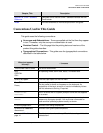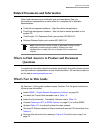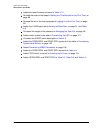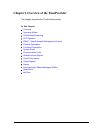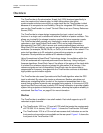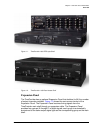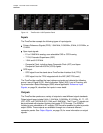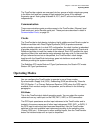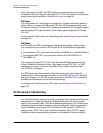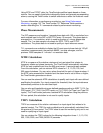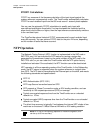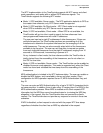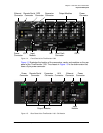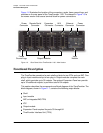
097-58001-02 Revision G – April 2008 TimeProvider User’s Guide 23
Chapter 1 Overview of the TimeProvider
Operating Modes
The TimeProvider outputs are arranged into four groups of eight outputs per group
in the Main shelf and four groups of eight outputs per group in the optional
Expansion panel. Each group is labeled A, B, C, and D, and can be configured
independently.
Communication
Three communications ports provide access to the TimeProvider: Ethernet, local
Craft serial port, and a Remote serial port. These ports are described in detail in
Communication Ports, on page 34.
Clocks
The TimeProvider’s clock design includes a highly stable ovenized Quartz crystal or
Rubidium oscillator with Direct Digital Synthesis (DDS) to produce accurate
synchronization outputs. In a dual-IOC configuration, the clock function is redundant
to provide protection, and you can mix and choose any combination of Quartz and
Rubidium oscillator to meet the needs of the network. Each IOC qualifies the input
signal and filters jitter and wander noise elements that may exist. In the event that
all input references are lost or disqualified, the TimeProvider’s clock design,
together with the SmartClock technology, goes into holdover mode with the
oscillator providing the system reference.
The Rubidium IOC meets Stratum 2/Type II performance; the Quartz IOC meets
Stratum 3E/Type I performance.
Operating Modes
You can configure the TimeProvider to operate in one of three modes:
Synchronization Supply Unit (SSU), Subtending (SUB) as defined by Telcordia
GR-378 Section 7, or Primary Reference Receiver (PRR) when the GPS input is
available. Each mode is unique in its operation, and is defined in the following
paragraphs.
SSU Mode
This is the TimeProvider’s default operating mode. You can select the system
reference from any valid input on the PRS, INP1, INP2, or GPS connectors.
The GPS input operates as another input reference to the TimeProvider and is
treated in the same manner as all other input references (PRS, INP1, or INP2). If
the GPS input is active but later becomes disqualified, then the TimeProvider
switches to the next available input reference according to the switching rules
(Priority, SSM, etc.). If there are no other qualified inputs, then the TimeProvider
enters the holdover state until an input is requalified.



